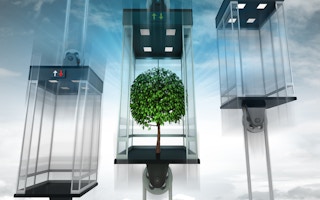In land-scarce Singapore, there is nowhere else to build, but up. Buildings – both residential and commercial – are transforming our skylines amidst rapid urbanisation. With increased urbanisation and rising population densities, higher energy consumption and damage to the environment is expected. This in turn leads to the pressing need for sustainable building technologies and solutions.
In Singapore, the Building and Construction Authority (BCA) is aiming for 80 per cent of the country’s buildings to qualify for the Green Mark Certification by 2030. This means that it would be essential that every feature within a building is looked into. When planners introduce energy-efficient outlines to existing high rise building systems, three major components are usually considered: temperature control, lighting design and energy saving devices.
One often overlooked aspect of buildings is elevators – they are a must-have in high rise buildings but the environmental impact of elevators is often neglected.
In fact, elevators are a significant source of energy consumption. They account for an average of 5 per cent to 17 per cent of a high rise building’s energy consumption. During peak operational hours, this figure can reach an astounding 50 per cent, according to a study conducted by the American Council for an Energy-Efficient Economy (ACEEE). A large portion of this goes into the braking system, which ensures the elevator’s safe and smooth operation. Energy is also needed in the building’s air-conditioning system to maintain an optimal running temperature for the elevator system and ensure that it does not overheat.
With so much energy generated by the elevator’s braking system, there is a corresponding demand placed on the air-conditioning system to effectively cool the brakes. Making elevators more energy-efficient is essential – especially if Singapore is to meet its target of having 80 per cent of its building stock certified sustainable by 2030.
Energy saving devices to revolutionize elevator technology
When an elevator’s braking system is in use, heat is constantly generated. As a result, a large amount of the elevator’s electrical energy is lost as heat energy. To catch up with the fast changing green technology, Welden has introduced an energy-saving device, a power regenerative unit (PRU) specifically aimed at regenerating energy. Set to harvest this energy and convert it to reusable energy, the device collects the energy utilised by the braking system that would have otherwise been lost as heat energy. The energy is then stored and channelled as electrical energy back to the building’s electrical grid to be used by the elevator for its operations.
As the elevator system temperature is partially moderated by the PRU and therefore lowered, the subsequent energy used up by the air-conditioner to maintain the elevator system’s optimal temperature will also be reduced accordingly. Ultimately, regenerative systems reduce power consumed by both the elevator and air-conditioning system, whilst not disrupting the overall power quality or continuity.
The benefits do not stop here – buildings using the system have recorded tangible outcomes. The Hong Kong AIA building has recorded more than 40 per cent in efficiency outcomes of the PRU, saving an estimated of 6570 kilowatt-hour (kWh) per year per elevator in power savings, which is enough to power an estimated total of 43,800 150-Watt lightbulbs. Similar results are also recorded in elevators in Shenzhen Airlines International Hotel and Shenzhen International Business Center, where total integrated power saving rates average at least 35 per cent.
Working towards a collective green vision
Green building technology is in no way limited to construction materials or heating, ventilation and air-conditioning (HVAC) systems alone, but also involves the design behind the building, and many other considerations. Green elevator technology is also a key element of green buildings and is starting to be of focus at building conferences like Build Eco Xpo (BEX) Asia.
With the global shift towards green building practices, it is only a matter of time before energy-efficient elevators are in high demand. Building owners considering an elevator vendor should take into account the energy efficiency of its manufacturing facilities as well as monitoring technologies in addition to elevator support systems. Reducing costs and energy consumption is now the way forward in the fast-changing green landscape.
Willie Tan is business development director, Welden. This article was written exclusively for Eco-Business.


















